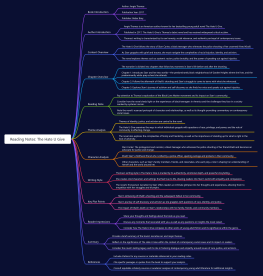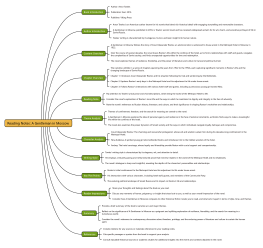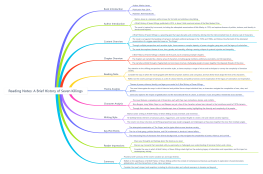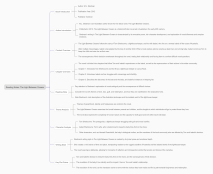
Fifty Shades of Grey-E.L. James: Book Summary
0 Report
This summary of 'Fifty Shades of Grey' by E.L. James provides an in-depth look at the book's key elements, making it a valuable resource for readers and literary enthusiasts. The introduction covers essential details about the author, E.L. James, and the book's publication history. E.L. James, a British author known for her Fifty Shades trilogy, transitioned from a television executive to a bestselling writer with this novel, which began as Twilight fan fiction. The content overview highlights the novel's focus on the complex relationship between Anastasia Steele, a recent college graduate, and Christian Grey, a young business magnate. Themes of BDSM, romance, and personal growth are central to the narrative. The chapter overview breaks down the story into three parts: Anastasia's initial meeting with Christian, the development of their relationship, and the conflicts and resolutions they face. Readers are encouraged to note the dynamics of power and control in the protagonists' relationship, the portrayal of BDSM practices, and the character evolution throughout the novel. The theme analysis delves into love, desire, trust, self-discovery, dominance, submission, and consent, contrasting Christian's troubled past with Anastasia's innocence. Character analysis provides insights into the main characters, Anastasia Steele and Christian Grey, and other significant supporting characters. The writing style of E.L. James is described as descriptive and immersive, with a blend of romance and eroticism that enhances the reading experience. Key plot points include Anastasia and Christian's initial meeting, the negotiation and exploration of their BDSM relationship, and the resolution of conflicts. Reader impressions invite personal reflections on the book, its controversy, and its impact on popular culture, along with memorable moments. The summary section offers a brief recap of the plot and major themes, reflecting on the novel's significance in contemporary romance literature and its reception by critics and readers. References include citations of sources and materials used, specific passages or quotes from the book, and reputable literary analyses or critical reviews for further insights.
Related Recommendations
Other works by the author
Outline/Content
See more
Book Introduction
Author: E.L. James
Publication Year: 2011
Publisher: Vintage Books
Author Introduction
E.L. James is a British author best known for her Fifty Shades trilogy.
Before becoming a writer, James worked as a television executive.
Fifty Shades of Grey originated as fan fiction based on the Twilight series.
Content Overview
Fifty Shades of Grey is the first novel in the Fifty Shades trilogy.
It follows the relationship between college graduate Anastasia Steele and young business magnate Christian Grey.
The novel explores themes of BDSM, romance, and personal growth.
Chapter Overview
The novel is divided into several parts, each containing multiple chapters.
Part One: Anastasia meets Christian Grey
Part Two: The development of Anastasia and Christian's relationship
Part Three: Conflict and resolution
Reading Note
Pay attention to the dynamics of power and control in Anastasia and Christian's relationship.
Consider the portrayal of BDSM practices and their role in the narrative.
Note the evolution of Anastasia and Christian's characters throughout the novel.
Theme Analysis
Themes of love, desire, trust, and self-discovery are central to the novel.
The exploration of BDSM introduces themes of dominance and submission, as well as consent.
The contrast between Christian's troubled past and Anastasia's innocence is a recurring theme.
Character Analysis
Anastasia Steele: The protagonist, a college graduate who becomes involved with Christian Grey.
Christian Grey: The male lead, a young billionaire with a penchant for BDSM.
Supporting characters: Include analyses of other significant characters.
Writing Style
James' writing style is descriptive and immersive, drawing readers into the world of Anastasia and Christian.
Dialogue plays a significant role in character development and relationship dynamics.
The novel blends romance with eroticism, creating a unique reading experience.
Key Plot Points
Anastasia and Christian's initial meeting and subsequent encounters.
The negotiation and exploration of their BDSM relationship.
The resolution of conflicts and the evolution of their relationship.
Reader Impressions
Share your thoughts and feelings about the book as you read.
Consider the controversy surrounding the novel and its impact on popular culture.
Discuss any surprising or memorable moments in the story.
Summary
Provide a brief summary of the book's plot and major themes.
Reflect on the significance of the novel within the context of contemporary romance literature.
Consider the reception of the book by critics and readers.
References
Include citations for any sources or materials referenced in your reading notes.
Cite specific passages or quotes from the book to support your analysis.
Consult reputable literary analyses or critical reviews for additional insights.
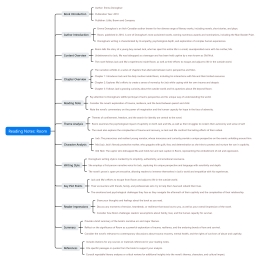
Collect
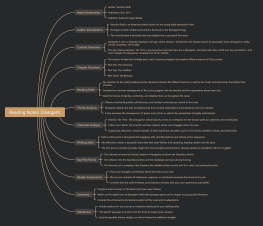
Collect
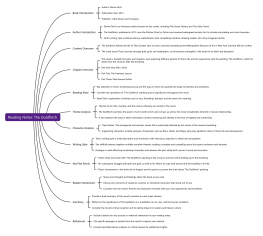
Collect

0 Comments
Next Page
